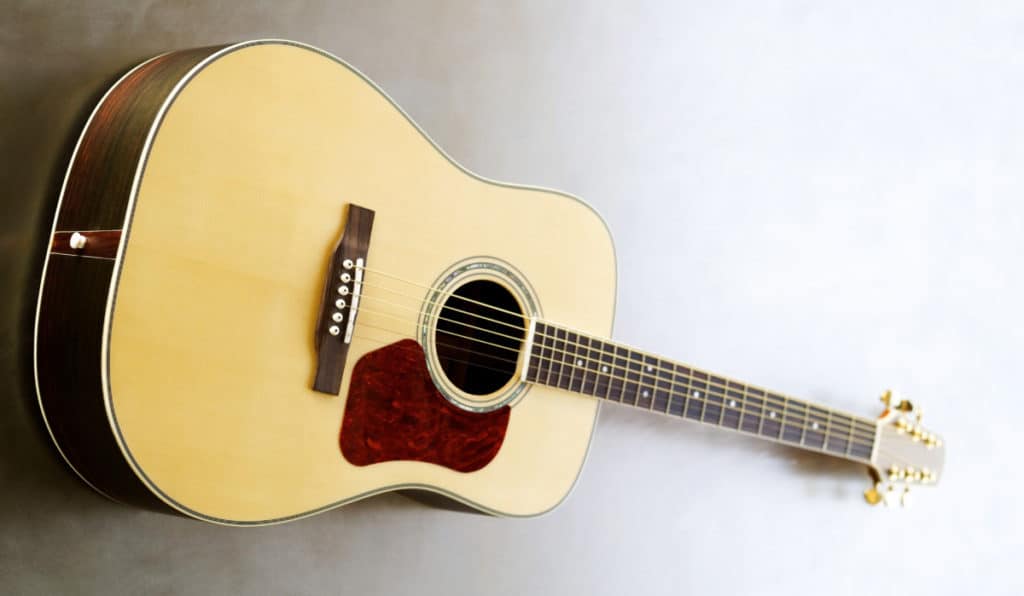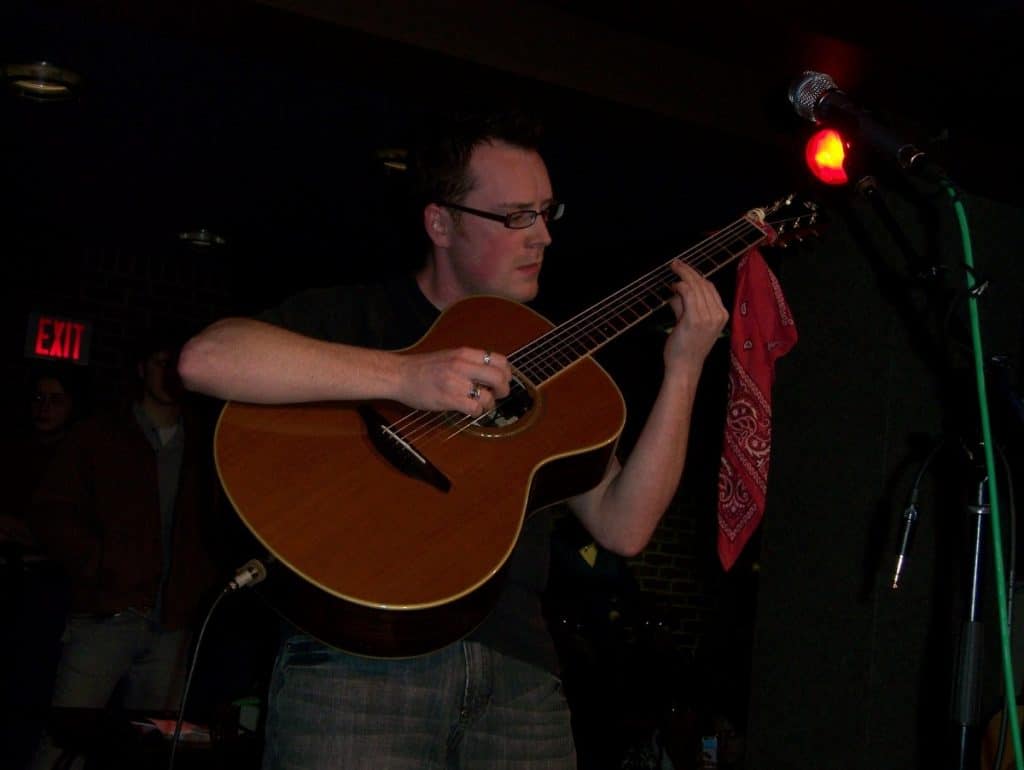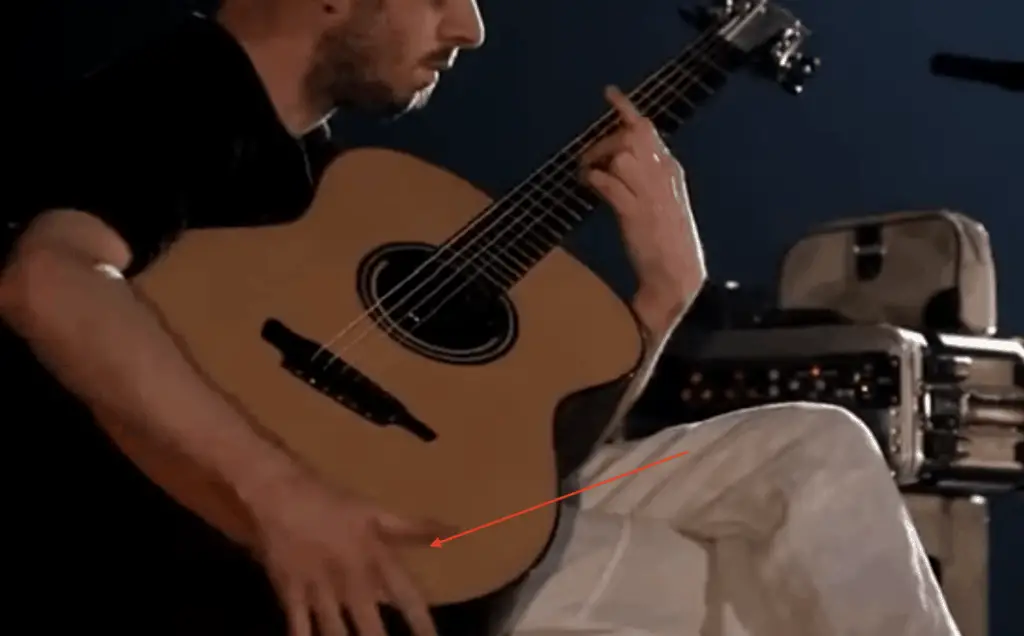There are many different kinds of musical instruments, including brass, woodwind, percussion, and stringed instruments, with each one serving a distinct purpose. Part of what makes the guitar special is the fact it can be used in other more unorthodox ways.
For example, a guitarist can create percussive sounds while drums are used exclusively for percussion. This begs some to question what type of instrument a guitar really is, considering it can be used for different purposes.
A guitar is a stringed instrument because guitarists pluck tightly wound strings tuned to pitch to create melodic rather than percussive sounds. However, it can occasionally be used as a percussive instrument either through palm-muted notes or by slapping the body of it.
Explained in another way, the drums are almost always used for keeping time through a loud, explosive, percussive sound, whereas a guitar is used almost exclusively for melodies. Every single song has a tempo or a time signature, in which moments of time are divided into bars. In these bars, there are beats, which are almost always illuminated or highlighted by a percussion instrument.
Compare and contrast this to a guitar, which is almost always used melodically rather than percussively. The difference between the two, however, is that a guitar can be used for both melodies and percussion, depending on the style and techniques of the player.
Is The Guitar A Stringed Instrument?

A guitar is a stringed instrument because the entire design of the instrument is conducive to vibration, rather than percussion.
Guitars are almost always made out of a wooden body, a material that’s conducive to vibrations.
While drums can have a wooden element to them as well, the entire body of the guitar, including the neck, body, and the headstock, are made out of wood.
The vibration of the strings is emphasized by the conductive qualities of the wooden body, which projects sound out into the world for everyone to hear.
In the case of the acoustic guitar, the hollow chamber in the center of the wooden body helps to project the sound acoustically, in contrast to the electric guitar which is done through electronic pick-ups connected to an amplifier.
More importantly, the strings can be tuned to different pitches, that way the sounds that come from it fit into a particular key signature, which is how we communicate melodies and harmonies, rather than timing like a percussion instrument.
The Guitar Can Be Used As A Percussive Instrument

Even though vibrating strings are the fundamental way a guitar is used to create melodies and harmonies, the guitar can be used as a percussive instrument.
There are a number of guitarists who play in this style, including Antoine Dufour, Andy McKee, and Erik Mongrain, however, the vast majority of players are not percussive guitarists.
Most players use the instrument for melodies, rather than percussion, however, the more advanced and stylish players can incorporate complex patterns of melody and percussion.
Over the last 2 decades, the percussive guitar has grown in popularity due to the success of some of the players mentioned above, as well as the record label, Candy Rat Records, who promoted the careers of some of the most popular instrumentalists on YouTube and other streaming services.
Consequently, it’s not uncommon for street guitarists and buskers to play in this genre.
And there is more than one way of achieving the percussive style.
Using Muted Guitar Strings To Create A Percussive Effect
Due to the positioning of the player’s hands, the guitar is unique in the sense that the bottom of one’s hands are free for other purposes if needed.
If a player wants to incorporate a percussive element into their predominantly melodic style, the guitarist just has to slap their palm against the strings repeatedly to create a percussive element.
This tactic is utilized between chord changes and single-note passages, but more commonly between chord changes.
Typically, a guitarist who incorporates a percussive element will slap the strings with the palm of their picking hand along to the tempo of the track.
This has the effect of not only keeping time, but also giving the listener an easy way to groove along to the melody.
Additionally, the point at which the player strikes their hand against the strings can change the way it sounds.
Furthermore, an acoustic guitarist, such as Antoine Dufour who is pictured above, may use their thumb to slap one of the strings along to the tempo of the track, rather than their palm.
One can see this all over Antoine Dufour’s music, which is also outlined in the standard notation/tablature below:

Slapping The Body To Create A Percussive Effect

The acoustic guitar is conducive to percussive sounds not only because of its shape and wooden body but also because the guitarist has a free palm available, sometimes even two, to slap on the body of the guitar.
Moreover, a guitarist can use their palm to slap against the body while fingering the notes of a chord simultaneously.
This is achieved through strumming the guitar strings with the picking hand, and then while the strings are vibrating, the player can finger the notes with their fingering hand while slapping the body of the guitar at the same time.
More importantly, guitars have sustain.
This means that if a note is struck, especially an open note, the note will continue playing as long as the string continues vibrating.
Because of its construction, guitarists are able to use their instruments in such a way that other instrumentalists are not. This style of guitar playing is commonly called percussion guitar.
Even though there are many guitarists who utilize this style, the guitar is fundamentally a stringed instrument that is used for creating melodies and harmonies.
The guitar makes a sound whenever the player plucks the string either with their fingers or, more commonly, a pick.
The strings are tightly wound to the instrument, that way whenever the guitarist plucks the string, the string vibrates so intensely that a sound is created as a result.
The tightness or looseness of the string determines the pitch of the string. For instance, if it’s wound tighter, the string vibrates faster so the sound is much higher in pitch.
When the string is wound loose, the vibrations are slower and thus lower in pitch. This is conducive to percussion for a couple of reasons which we’ll explore down below.
Because guitars can be tuned to the notes of a chord, it’s possible to play many different chords without using the fretting hand to fret individual notes.
For example, the guitar can be tuned to the notes of an E Minor 7 chord, that way the guitarist doesn’t have to fret any of the notes, essentially freeing either the left or right hand.
In the case of the E Minor 7 chord, you can either strum the notes of the chord with the right hand or the left-hand through the pull-off technique, which means the player is literally pulling the strings down and reverberating them that way.
This means the right hand is free to slap the body of the guitar along to a particular tempo.
Furthermore, you can slap the body of the guitar in a way that’s highly complex, using a number of different rhythmic patterns and time signatures.
Using Harmonics To Create Percussive Guitar Sounds
Because each guitar string can be tuned to the notes of the chord, the harmonics, which are most commonly played at the 12th fret, can outline the notes of the chord as well.
While harmonics don’t ring out as long as regularly plucked notes, the effect can still be heard for at least 5-10 seconds, sometimes even longer depending on the quality of the guitar, the strings, and the strength of the player.
A great example of this technique is the song, “Spiritual Groove,” from Antoine Dufour.
You can see this technique in the song below. Antoine repeatedly slaps the strings at the 12th fret in the introduction of the track.
This means that a player can use harmonics to ring out while simultaneously slapping on the body of the instrument at the same time to keep time.
More importantly, a guitarist can actually slap the strings with their open right or left hand which will create not only melodic sounds but percussive sounds, due to the impact of the player’s hand which slaps the string against the fretboard while simultaneously creating a melody due to the vibration of the string.
Once you’ve figured out how to create the percussive element in a number of ways, it’s possible to combine all of them together.

YouTube Video Tutorial
Conclusion
Despite the fact the guitar can be used in a percussive way, the sole purpose of the instrument is to create melodies through plucked, vibrating, strings.
The vast majority of guitar players choose to use the instrument in this way, even though it’s becoming more common for guitarists to utilize a more percussive style.

 Written By :
Written By :
